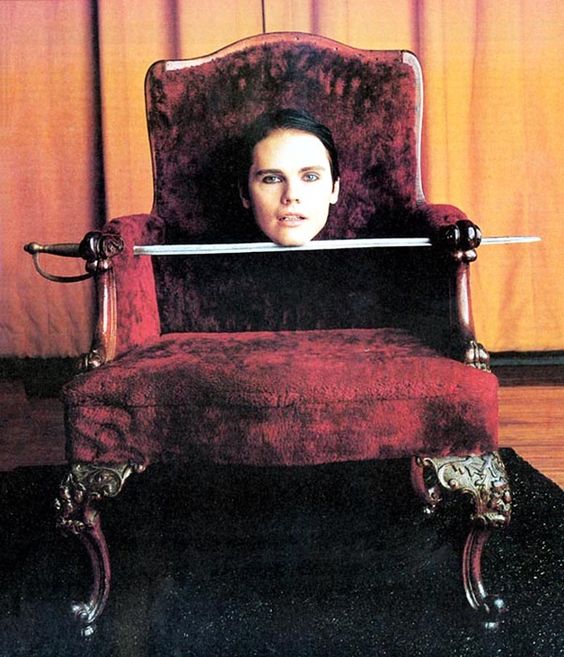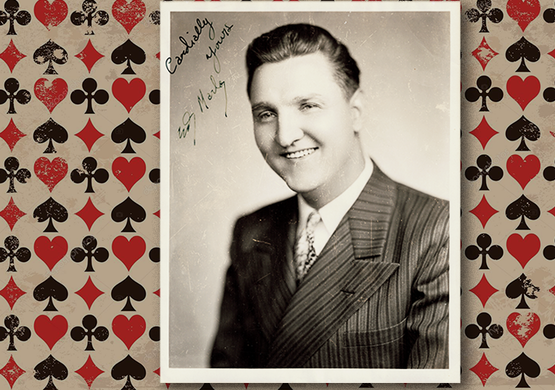Welcome to the second installment of Take Two. While I imagine I will be more often than not inclined toward looking at my favorite kinds of magic, namely close-up and sleight-of-hand conjuring, the fact is that I am interested in all types of magic, and whether as performer, consultant, writer or director, I have direct experience with all of its many forms, with the possible exception of children’s magic (which I also respect and appreciate when done at its highest level, and eventually I may get around to posting some examples of that).
So this week I thought I would leap from last week’s look at the Torn-and-Restored Cigarette Paper (a close-up trick that has been adapted to stage performance), to “grand illusion,” that is, large-scale magic that involves the human body.
I have all too often heard the thought expressed among both the public and amateur magicians alike that large-scale illusions are easy to do because the apparatus does the work for you. No one who has ever had to handle a Broom Suspension illusion however would ever say such a thing; the thousands of pounds of pressure concentrated at a central point in an elaborate apparatus with a human being attached to it is too terrifying to even consider the possibility of uttering such foolishness. However, the common misconception is understandable when we see so many illusionists who make the fundamental mistake of thinking that the method is the trick—an error that all too often stems from failing to have studied the principles of conjuring before graduating to the challenges of large apparatus illusions. (For a deeper discussion of this issue for magicians, please see my essay, “The Method is Not the Trick,” in my second book, Devious Standards, and which first appeared in Antimony magazine.) The late Charles Reynolds—historian, author, illusion consultant and greatly missed all around bon vivant—said that every magician, no matter their specialty, should study the Cups and Balls in order to gain a full understanding of the principles of conjuring, and he would specifically point out that this advice was equally important for illusionists. He knew what he was talking about, having been the chief illusion consultant for Doug Henning’s landmark television specials, but far too many illusionists ignore such wise counsel, thinking that owning the box is sufficient qualification for performance.
But: I digress! While far too many conventions of the grand illusion branch of magic have helped to render it all but irrelevant to most discussions about beauty and power in contemporary magic performance, there are still many marvelous illusions out there, if only you had the chance to see them well presented. So even though it is silly to consider a mere two examples as any sort of significant representation, what I offer today is simply two of my favorite grand illusions, and I commend them to you for your enjoyment and appreciation. Close-up magic holds little advantage over beautiful mysteries such as these, when performed at this caliber.
Robert Harbin and The Zig-Zag Girl
The first is an historic performance by one of the most legendary illusion inventors of the mid-20th century, Robert Harbin. Harbin was a British professional magician and a prolific author and inventor. His most famous illusion is probably “The Zig-Zag Girl,” which eventually became ubiquitous to the point of absurdity in the 1970s and ‘80s. Unfortunately the illusion was (and is) often performed poorly, with many of Harbin’s countless details abandoned due to laziness and a lack of insight (by builders and performers alike) into the illusion’s greatest strengths. Although I initially had the opportunity to see this footage of Harbin’s performance long ago, it was not until fairly recently that most magicians got the chance to see it, and discover the revelatory nature of Harbin’s performance of his own clever and seminal masterpiece.
In short: Harbin performed the illusion as if it was a piece of close-up magic. He brought a spectator up from the audience in order to examine the props before proceeding, and to serve as proxy for the rest of the audience, as she witnesses the impossibility up close—and reacts quite accordingly!
If you’re not a professional magician I encourage you to enjoy this performance from beginning to end—don’t look away—and then, finding your enjoyment sufficient, perhaps decline searching for coarse explanations which will do nothing to enhance your experience, and in fact, will diminish your recollection and appreciation in the time it takes to click your mouse. If you like puzzles, by all means go and enjoy solving them, but I encourage you to consider that magic like this can be an experience—not merely an intellectual exercise.
Please enjoy The Zig-Zag Girl, performed by its creator, Mr. Robert Harbin:
Mark Kalin & Jinger Leigh: Sawing a Woman in Half
What actually got me thinking about posting a couple of illusions for Take Two was running into one of the greatest of our contemporary illusionists just a few weeks ago, namely my colleague Mark Kalin, and his beautiful and immensely talented partner, Jinger Leigh. We were all performing at the Magic Castle in Los Angeles—they in the Palace of Mystery, myself in the Peller Theater along with my longtime friend and colleague, Peter Samelson—and I made it my business to get to see their excellent show, and spend some time chatting backstage for a while. I first saw Mark perform as a solo act, when he was doing a manipulative act themed around billiards, back in 1978 (if memory serves) at the Society of American Magicians conference at the Waldorf Astoria in New York City (where I also first saw The Asparagus Valley Cultural Society—a story for another day). We didn’t meet until years later, probably when we worked together at Caesars Palace in Las Vegas, at their specialty venue, Caesars Magical Empire, in the 1990s.
Not only are Mark and Jinger a pair of the best performers doing grand illusion today, but also here they are performing another of my absolutely favorite illusions, a very particular version of the century-old plot of Sawing a Woman in Half. (I must mention that David Ben, of Magicana, has also performed one of the cleverest approaches to this piece that I know of, which I found myself describing to a colleague just a few weeks ago.) Without exploring the history of that plot here, or of this particular version, I simply present this to you for your enjoyment because it is as delightful as it is mystifying. I love how unpretentious Mark’s attitude is—a breath of fresh air compared with the bluster and pomposity of so many contemporary illusionists—and how he and Jinger make this look easy and seamless, when in fact, it is anything but, and there is just as much going on in every moment and maneuver as there is in a close-up version of, well, the Cups and Balls. Again, don’t look away: stop your multitasking for seven minutes, expand the browser window, turn up the sound a bit, and enjoy what a great illusion, in (four) great hands, can really aspire to.
And one more...
As an aside, one of the most interesting jobs I ever took on involving illusions was as a consultant to a Rolling Stone photo shoot of the Smashing Pumpkins done by famed rock star photographer Mark Seliger for a cover issue in 1995. The only example I could find online was this photo of Billy Corgan. The illusion is so perfect that many readers may have suspected it was simply photoshopped, but in fact I borrowed this illusion from Jay Marshall for the shoot. The section included a number of illusions, which I tried to select and pose such that the photoshop suspicions would be minimized.

MORE: TAKE TWO ARCHIVE



